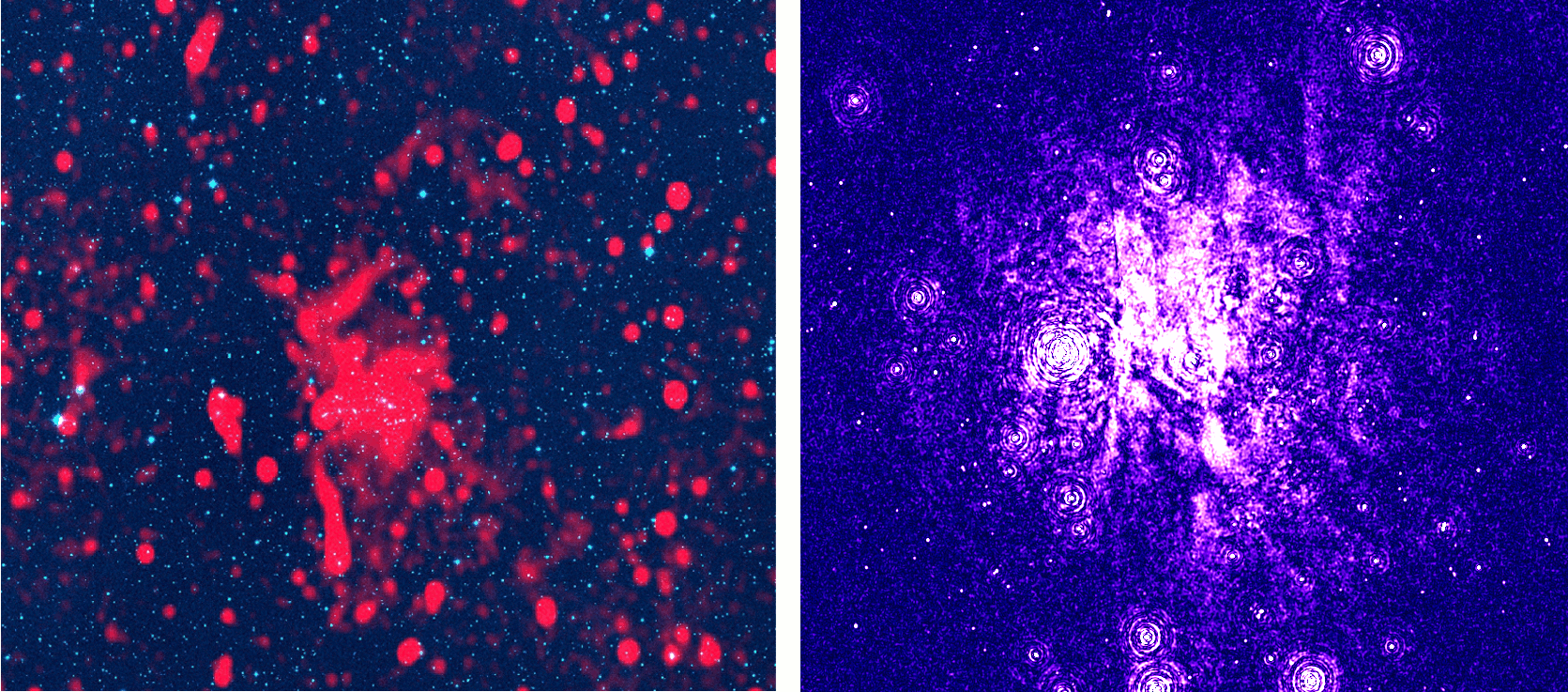Daily Image
08-07-2010Today´s colloquium: Tomography of galaxy clusters through low-frequency radio polarimetry (Roberto Pizzo, ASTRON)
| Submitter: | Valeriu Tudose |
| Description: | During this talk I will review the results that I have obtained studying low-redshift galaxy clusters in the radio domain through WSRT observations. I will mainly focus on Abell 2255, one of the most famous galaxy clusters hosting a radio halo and a radio relic. In total intensity, our sensitive observations allowed the detection of both sources, together with other extended features lying around the cluster center (see left panel of the figure, where the radio emission, in red, overlays on the optical DSS image of the cluster, in blue). The origin of these new features is puzzling. Some of them could be relics, possibly deriving from the accretion of material from the cosmic environment into the cluster along the super cluster filaments (Pizzo et al 2008). Others could represent the first example of a new class of objects detectable around galaxy clusters only at very low frequency (Pizzo & de Bruyn 2009). Important results have been obtained also in polarization. By using RM-synthesis, we performed a deep multi frequency rotation measure (RM) tomography of the cluster (Pizzo et al. 2010). The high frequency RM-cube (~1.4 GHz) allowed the understanding of the 3-dimensional geometry of A2255. The low frequency RM-cube (~ 350 MHz), gave us important additional information on the properties of our Galaxy, whose emission dominates in the field of the cluster (see right panel of the figure, where the polarized emission towards A2255 at a Faraday depth of + 4 rad/m2 is shown). Figure caption: Merger events drive shock waves and turbulence into cluster environments and reaccelerate the relativistic particles present in the ICM. These, by interacting with the cluster magnetic field, give rise to extended diffuse features, known as halos and relics. Although the improved capabilities of radio interferometers have significantly increased the detection and knowledge of such radio sources, their origin and evolution is not yet understood. Their study is an important tool to investigate not only the structure formation of the universe but also the origin and topology of cluster magnetic fields. |
| Copyright: | R. Pizzo |
| Tweet |  |
